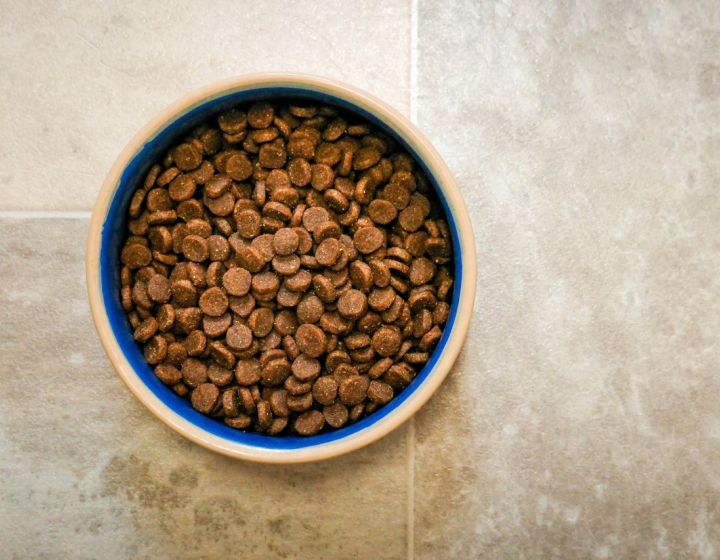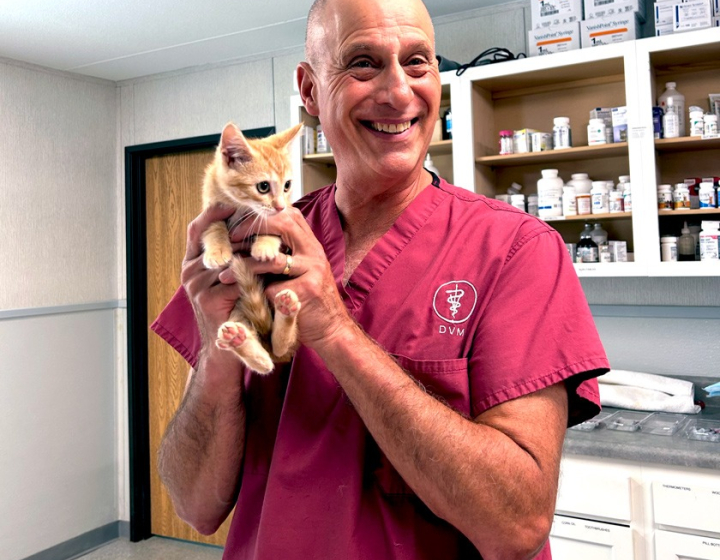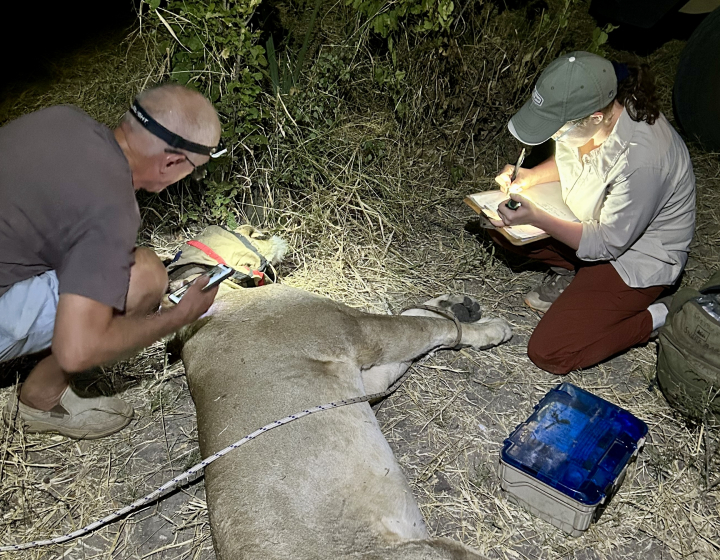Snow goose treated for lead toxicity at Cornell
Each spring, large flocks of snow geese make their annual trek from the south back up to their Arctic breeding grounds. One goose’s journey was interrupted, however, by an increasingly common threat to wildlife — lead toxicity. This led to the ivory-feathered waterfowl coming to Cornell’s Janet L. Swanson Wildlife Hospital, where the clinical team worked hard to ensure this patient could fly free once again.
A wildlife rehabilitator brought the female goose in from Varick, New York, where it was found unable to fly and acting sick and lethargic. When the wildlife clinical team did their intake exam, they knew almost at first glance what this bird was up against.
“Unfortunately, we see a lot of lead toxicity cases come into the hospital,” says Alice Van Demark , licensed veterinary technician. “So, we know the signs of that condition well.” The team sent blood samples to their colleagues at the Animal Health Diagnostic Center, which quickly ran the tests and confirmed the diagnosis.
They believe that the goose likely ingested lead from either lead shot or lead-based fishing lures and gear. As a result, the goose had particles of lead both in her GI tract and throughout her system. “When lead pieces stay inside the body long enough, it gets absorbed into the muscles and bones,” says Dr. Cynthia Hopf-Dennis, instructor in the Section of Zoological Medicine.
This required multiple approaches to treat lead toxicity. For the pieces of lead remaining in the bird’s GI system, the team fed her extra grit and sand (a typical part of birds’ diets) to help move those particles along and out of the digestive tract. The systemic lead is trickier, and required what’s called chelation therapy, where the clinical team gives the goose an oral medication containing lead-binding chemicals that allow the lead to then be excreted from the body. On top of lead toxicity, the wildlife clinical team also treated the goose for an ulcer in her eye.
The goose seemed to tolerate her captivity fairly well. “Geese are pretty adaptable,” says Hopf-Dennis. “They don’t like us, but they get used to us.” The wildlife team noticed that she had a particular penchant for corn on the cob, a meal they provided her as much as possible.
After this careful treatment and rehabilitation, the goose’s lead levels finally were low enough for her transfer back to the rehabilitator. Just this week, the bird was released back to the wild.
Increasing numbers and species of animals are brought into the wildlife hospital with high levels of lead in their system. “Lead is showing up in all kinds of animals — not just the ones that might directly ingest it,” says Hopf-Dennis, noting that even pigeons are showing up with lead toxicity. “This is a disturbing sign that the contaminant is everywhere, and that humans are likely getting exposed to it as well.”
Anglers and hunters are encouraged to consider alternatives to lead-based ammunition and fishing gear, as their choices can have direct, devastating impact on local ecosystems and public health.
If you find an injured wild animal, please call the Janet L. Swanson Wildlife Hospital at 607.253.3060.
Help support the care given by the Janet L. Swanson Wildlife Hospital here.
Written by Lauren Cahoon Roberts
Photos and video by Darcy Rose





